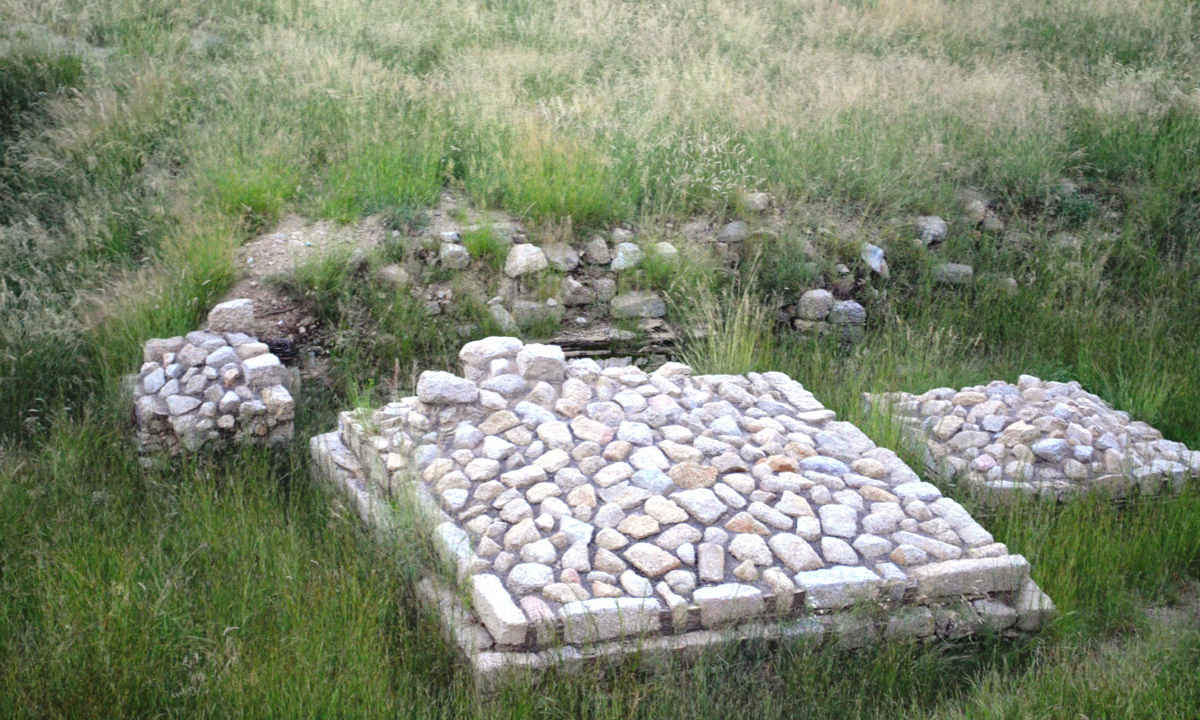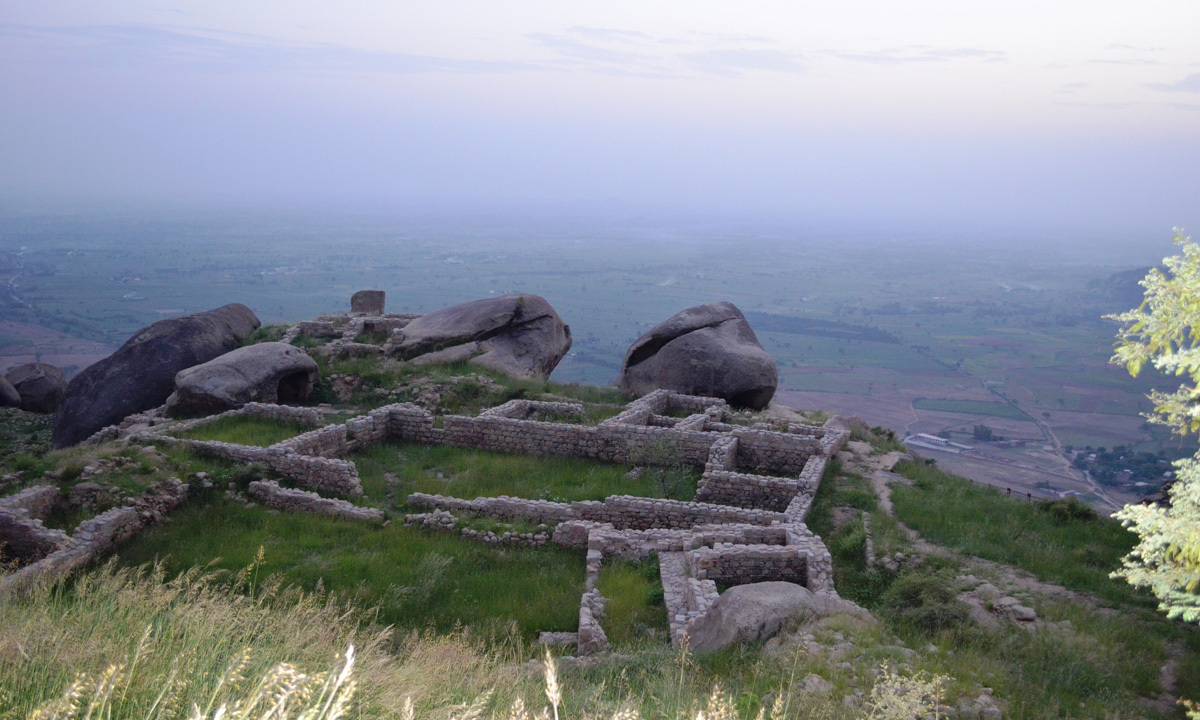Hithchiker
MEMBER
https://www.dawn.com/news/1125480
Rani’ is a Hindi word that means ‘Queen’ while ‘gat’ is a Pashto word which means a ‘huge rock’. The remains of the valley, which owes its name to the huge standing rock on the top of the mountain that shoulders the ruins, can be seen from far off areas of the district.
According to the archeologists, Ranigat, a developed state, remained the center of Buddhist art and culture for centuries.
Ranigat, belonging to the period of first-sixth century AD and protected under the Antiquities Act 1975, has been a celebrated part of folklore – songs and stories of which still echo from the coffee-hued ruins in Totalai in the Buner District of Khyber Pakhtunkhwa, Pakistan.

Being a part of origin of Buddhist Gandhara Civilization it has also attracted re-construction funds from Japanese research institutes. – Photo by Naveed Yousafzai

Rani Ghat is the largest site in the Gandhara region comprising of 4 kilometer radius. – Photo by Naveed Yousafzai

This area used to be a fairy-land for foreigners and many, including Japanese, came here for studies in the ancient times to learn Buddhism. – Photo by Naveed Yousafzai

Rani Ghat is the largest site in the Gandhara region comprising of 4 kilometer radius. – Photo by Naveed Yousafzai

This area used to be a fairy-land for foreigners and many, including Japanese, came here for studies in the ancient times to learn Buddhism. – Photo by Naveed Yousafzai

Beside the reconstruction of the site they also arranged for way in the mountain to facilitate the visitors. – Photo by Naveed Yousafzai

Rani Ghat is the largest site in the Gandhara region comprising of 4 kilometer radius. – Photo by Naveed Yousafzai

Beside the reconstruction of the site they also arranged for way in the mountain to facilitate the visitors. – Photo by Naveed Yousafzai

Being a part of origin of Buddhist Gandhara Civilization it has also attracted re-construction funds from Japanese research institutes. – Photo by Naveed Yousafzai

Beside the reconstruction of the site they also arranged for way in the mountain to facilitate the visitors. – Photo by Naveed Yousafzai

This area used to be a fairy-land for foreigners and many, including Japanese, came here for studies in the ancient times to learn Buddhism. – Photo by Naveed Yousafzai

Rani Ghat is the largest site in the Gandhara region comprising of 4 kilometer radius. – Photo by Naveed Yousafzai

This area used to be a fairy-land for foreigners and many, including Japanese, came here for studies in the ancient times to learn Buddhism. – Photo by Naveed Yousafzai

Beside the reconstruction of the site they also arranged for way in the mountain to facilitate the visitors. – Photo by Naveed Yousafzai

This area used to be a fairy-land for foreigners and many, including Japanese, came here for studies in the ancient times to learn Buddhism. – Photo by Naveed Yousafzai

Being a part of origin of Buddhist Gandhara Civilization it has also attracted re-construction funds from Japanese research institutes. – Photo by Naveed Yousafzai

– Photo by Naveed Yousafzai

Rani Ghat is the largest site in the Gandhara region comprising of 4 kilometer radius. – Photo by Naveed Yousafzai

Being a part of origin of Buddhist Gandhara Civilization it has also attracted re-construction funds from Japanese research institutes. – Photo by Naveed Yousafzai
Rani’ is a Hindi word that means ‘Queen’ while ‘gat’ is a Pashto word which means a ‘huge rock’. The remains of the valley, which owes its name to the huge standing rock on the top of the mountain that shoulders the ruins, can be seen from far off areas of the district.
According to the archeologists, Ranigat, a developed state, remained the center of Buddhist art and culture for centuries.
Ranigat, belonging to the period of first-sixth century AD and protected under the Antiquities Act 1975, has been a celebrated part of folklore – songs and stories of which still echo from the coffee-hued ruins in Totalai in the Buner District of Khyber Pakhtunkhwa, Pakistan.

Being a part of origin of Buddhist Gandhara Civilization it has also attracted re-construction funds from Japanese research institutes. – Photo by Naveed Yousafzai

Rani Ghat is the largest site in the Gandhara region comprising of 4 kilometer radius. – Photo by Naveed Yousafzai

This area used to be a fairy-land for foreigners and many, including Japanese, came here for studies in the ancient times to learn Buddhism. – Photo by Naveed Yousafzai

Rani Ghat is the largest site in the Gandhara region comprising of 4 kilometer radius. – Photo by Naveed Yousafzai

This area used to be a fairy-land for foreigners and many, including Japanese, came here for studies in the ancient times to learn Buddhism. – Photo by Naveed Yousafzai

Beside the reconstruction of the site they also arranged for way in the mountain to facilitate the visitors. – Photo by Naveed Yousafzai

Rani Ghat is the largest site in the Gandhara region comprising of 4 kilometer radius. – Photo by Naveed Yousafzai

Beside the reconstruction of the site they also arranged for way in the mountain to facilitate the visitors. – Photo by Naveed Yousafzai

Being a part of origin of Buddhist Gandhara Civilization it has also attracted re-construction funds from Japanese research institutes. – Photo by Naveed Yousafzai

Beside the reconstruction of the site they also arranged for way in the mountain to facilitate the visitors. – Photo by Naveed Yousafzai

This area used to be a fairy-land for foreigners and many, including Japanese, came here for studies in the ancient times to learn Buddhism. – Photo by Naveed Yousafzai

Rani Ghat is the largest site in the Gandhara region comprising of 4 kilometer radius. – Photo by Naveed Yousafzai

This area used to be a fairy-land for foreigners and many, including Japanese, came here for studies in the ancient times to learn Buddhism. – Photo by Naveed Yousafzai

Beside the reconstruction of the site they also arranged for way in the mountain to facilitate the visitors. – Photo by Naveed Yousafzai

This area used to be a fairy-land for foreigners and many, including Japanese, came here for studies in the ancient times to learn Buddhism. – Photo by Naveed Yousafzai

Being a part of origin of Buddhist Gandhara Civilization it has also attracted re-construction funds from Japanese research institutes. – Photo by Naveed Yousafzai

– Photo by Naveed Yousafzai

Rani Ghat is the largest site in the Gandhara region comprising of 4 kilometer radius. – Photo by Naveed Yousafzai

Being a part of origin of Buddhist Gandhara Civilization it has also attracted re-construction funds from Japanese research institutes. – Photo by Naveed Yousafzai
